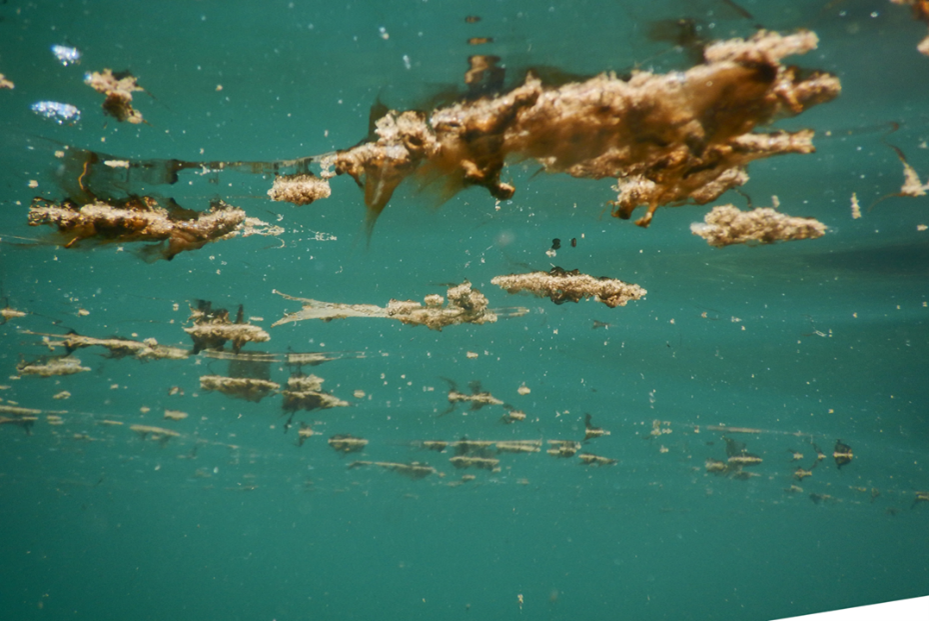Bridging the gap between marine biodiversity conservation and food safety: a one health approach to harmful algal blooms
Publié le 13 octobre 2023 – Mis à jour le 13 octobre 2023
Authors
Marie Yasmine Dechraoui Botteina, Luisa Passeron Mangialajoa
a Université Côte d'Azur, CNRS, UMR 7035 ECOSEAS, EUR LIFE, Nice, France
Harmful algal blooms
Virtually every country in the world is now directly, or indirectly, affected by harmful blooms of microscopic algae or phytoplankton. These harmful algal blooms (HABs) can kill marine organisms and even be fatal to humans. By contaminating seafood, air and bathing waters, toxin-producing HABs threaten fisheries, aquaculture farms, tourism and human health, and cause economic losses. Non-toxic HABs also negatively affect the environment and human activities through production of high biomass and by causing seawater discolorations, anoxia and mucilage. With the growth of coastal population density and of aquaculture production and trade to meet a growing demand for seafood, the number of events associated with HABs have been increasing globally.
In temperate areas, such as in the Mediterranean sea, harmful algal bloom (HAB) events have been increasing over the last 30 years (Hallegraeff et al 2021, based on records available in the Harmful Algae Event Database, HAEDAT (http://haedat.iode.org)), and HABs in benthic systems are of particular concern. They mostly involve blooms of the toxic species Ostreopsis cf ovata that reoccur yearly, covering macroalgae growing on rocky shores and evolving as mucilaginous floating aggregates that can lead to mortalities of benthic organisms and human illness through skin contact and inhalation of aerosols (Jauzen et al. 2018). Such events are now also occurring on the French Atlantic coast, and they led in 2021 to the closure of beaches and 800 confirmed cases of intoxication during the high tourist season. In addition, emerging risks are being identified with the occurrence of species from the genus Gambierdiscus, which are responsible for ciguatera poisoning, and from the genus Karenia, responsible for neurotoxic shellfish poisoning (Arnich, 2021; Amzil, 2021; Hort et al, 2021).
Whether in temperate or in tropical coral areas, anthropogenic and climate-related deterioration of the marine environment and associated shifts in habitat-forming dominants (known as regime-shifts) are suspected to play an important role in the occurrence and toxicity of HAB species (Montserra et al, 2022, Fricke et al 2018, Gianni et al, 2018), and thus in the contamination of seafood and in the risk of human poisonings. In the Mediterranean, healthy habitats dominated by forest-forming macroalgae (i.e., Cystoseira s.l. species) or the seagrass Posidonia oceanica are being replaced with less complex communities (macroalgae by algal turfs and seagrasses by dead mat covered with ephemeral species). These changes have been attributed to multiple stressors directly linked to anthropogenic activities, including the urbanization of coasts, tourism, grazer proliferation resulting from disruption of natural food webs, overfishing, water quality, mechanical stress, and climate change (Fricket et al, 2018, Giani et al, 2018). In these shifted, deteriorated habitats, toxic benthic microalgae appear to thrive, though the mechanisms that favour their growth and potential toxicity in these alternative habitats have yet to be determined.
In this context, ECOSEAS laboratory at Université Cote d’Azur, is now assessing the effects of abrupt changes (due to climate change, but not exclusively) on benthic communities including toxic phytoplankton and vulnerable habitats. It will bridge the gap between marine biodiversity conservation and food safety through the assessment of biotoxin production and transfer in marine ecosystems using innovative transdisciplinary approaches involving ecotoxicology, chemistry, geographic information systems, and mathematical models. This research aims at developing nature-based mitigation solutions and prediction tools to facilitate coastal and fishery management and promote key habitat conservation.
This research on marine biodiversity conservation and food safety, developed following a “One health” approach, links human health, animal health and the ecological state of ecosystems, and is in line with the UN SDGs 14, 13, 2 and 3.
References
- Fricke A., Pey A., Gianni F., Lemée R., Mangialajo L. 2018. Multiple stressors and benthic harmful algal blooms (BHABs): potential effects of temperature rise and nutrient enrichment. Marine Pollution Bulletin, 131: 552-564
- Gianni F., Bartolini F., Airoldi L., Mangialajo L., 2018. Reduction of herbivorous fish pressure can facilitate focal algal species forestation on artificial structures. Marine Environmental Research, 138: 102-109.
- Hort, V., Abadie, E., Arnich, N., Dechraoui Bottein, M. Y., & Amzil, Z. (2021). Chemodiversity of brevetoxins and other potentially toxic metabolites produced by Karenia spp. and their metabolic products in marine organisms. Marine drugs, 19(12), 656.
- Leite, I. D. P., Sdiri, K., Taylor, A., Viallon, J., Gharbia, H. B., Mafra Júnior, L. L., ... & Bottein, M. Y. D. (2021). Experimental Evidence of Ciguatoxin Accumulation and Depuration in Carnivorous Lionfish. Toxins, 13(8), 564.
- Mangialajo L., Fricke A., Perez Gutierrez G., Catania D., Jauzein C., Lemée R., 2017. Benthic Dinoflagellates Integrator (BEDI): a new method for the quantification of Benthic Harmful Algal Blooms. Harmful Algae, 64: 1-10. DOI:10.1016/j.hal.2017.03.002
- Hallegraeff, D. M. Anderson, C. Belin, M-Y Dechraoui Bottein, E. Bresnan, M. Chinain, H. Enevoldsen, M. Iwataki, B. Karlson, C. H. McKenzie, I. Sunesen, G. C. Pitcher, P. Provoost, A. Richardson, L. Schweibold, P. A. Tester, V. L. Trainer, A. T. Yñiguez & A. Zingone Perceived global increase in algal blooms is attributable to intensified monitoring and emerging bloom impacts (2021) Nature Communications Earth & Environment, 117
- Monserrat M., Catania D., Asnaghi V., Chiantore M., Lemée R., & Mangialajo L., 2022. The role of habitat in the facilitation of Ostreopsis spp. blooms. Harmful Algae, 113, 102199.
















